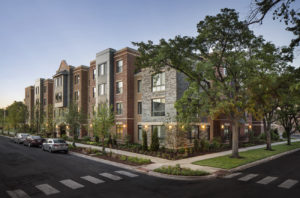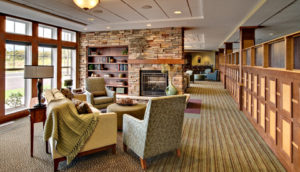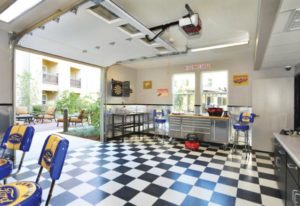
We have heard a lot lately about the effect baby boomers are having on the economy, various industries, healthcare and society in general as they begin their transition to retirement. The senior housing market is no different. There is an exorbitant amount of baby boomers who are empty nesters and on the cusp of retirement. They are looking to downsize their homes and expunge some of the responsibilities of being a homeowner such as cutting the lawn, shoveling snow, housekeeping, etc.
The size of this population is quickly growing. According to a 2014 Census Bureau report, “65+ in the United States: 2010,” ‘the population aged 65 and over continues to grow more rapidly than the population under age 65.’ (For more information on the census, visit: www.census.gov/content/dam/Census/library/publications/2014/demo/p23-212.pdf)
With a high demand for independent senior housing, and the natural evolutionary change in generational life styles, we are challenged with recognizing the changes that must be embraced in the built environment to create the “new” paradigm shift towards the active senior independent living facilities.
 Many older senior living facilities accommodate the previous generation’s style, aesthetic preferences and preferred amenities. Imagine wall paper, floral patterns, puzzle tables, libraries, sewing rooms and card tables.
Many older senior living facilities accommodate the previous generation’s style, aesthetic preferences and preferred amenities. Imagine wall paper, floral patterns, puzzle tables, libraries, sewing rooms and card tables.
As an architect and baby boomer myself, I recall what my parents were accustomed to compared to what I have grown to prefer. The way we live today and the conveniences we enjoy are very different from that of our parents. I grew up in three-bedroom, one-bathroom house as a family of five. That was the norm. My parents, as did many of their generation, had a full or queen size bed at best, one dresser, one closet, and absolutely no technology. This is no longer the case, there is a new paradigm shift in senior living.
Accommodating the Shift
Taking a deeper look into the factors pushing this shift, it is more than just baby boomers coming of age. While the increase in seniors is a driving force, the lifestyle people are enjoying in the 21st century is very different than that of the 20th century.
Architects must take the time to understand this shift in population and consumer expectations of the “new” end user. Designing the same old senior housing in the same old senior community will result in high vacancy, low absorption and failed financials.
In order to truly understand the end-user, we need to get to know the end-user. Architects can consult census data, information from appraisers, and market analyses, but the best design professionals do not solely rely on these sources. When designing senior living facilities, I prefer to interview the people who will be living in them. Spending time talking with those I am designing for is invaluable. I recommend that any architect embarking on a new design project should immerse themselves in the culture they are designing for, and become part of the living culture. Yes, live in a senior community for a few weeks. Become immersed. You will walk away with a wonderful sense of enlightenment.
I believe the new paradigm will be defined by consumer expectations. Senior housing must accommodate and promote independence, mobility and active life styles. Offer choices, accommodate the desire for more autonomy in varied unit mix, offer food service options and design flexible facilities that provide a full range of activities. Seniors want to shape their environment and choose how their needs are met, flexibility is paramount.
Provide value. You will not capture today’s seniors by offering tiny rooms with no activities. Integrate the facility into the existing neighborhood. Amenities go beyond the limitations of the building. Select your site carefully. Proximity to cultural, social and activity based amenities allows the independent living resident to remain active in the wider community. Seniors want to live among all age groups in an economically and racially diverse environment, and they want to live near public transportation systems. Ironically, not unlike today’s millennials.
 Fitness and wellness programs are critically important. Senior communities are embracing well‐rounded exercise programs that include spa‐like services such as a beauty shop, massage room, along with a pool, hot tub, aerobics studio, and yoga room. Let’s not overlook the importance of lifelong learning. Many people in their senior years continue to seek intellectual and even vocational stimulation. Attending the theatre, poetry readings, sporting events and, in some cases, performing themselves brings excitement and vibrancy to seniors’ lives.
Fitness and wellness programs are critically important. Senior communities are embracing well‐rounded exercise programs that include spa‐like services such as a beauty shop, massage room, along with a pool, hot tub, aerobics studio, and yoga room. Let’s not overlook the importance of lifelong learning. Many people in their senior years continue to seek intellectual and even vocational stimulation. Attending the theatre, poetry readings, sporting events and, in some cases, performing themselves brings excitement and vibrancy to seniors’ lives.
Think technology—what are baby boomers used to? Big screen TVs, Wi-Fi, game systems, movie rooms, and continuing education programs. Think modern—how has the style aesthetic changed? Lots of natural light, open spaces, stainless steel appliances, and a broad range of colors and textures. Think location—what kind of lifestyle should be accommodated? Urban environment, near the theatre district, walkable communities, proximately to golf courses and tennis courts. Think luxury—what do they do to indulge and pamper themselves? Spas that provide massages, pedicures and skin care, pubs that serve alcohol, and shops.



As we make this transformation from one demographic to the next, and continue to learn more about the needs and wants of the baby boomer generation, it is imperative that we recreate our toolbox. Designers are confronted with the possibility of hundreds of thousands of beds at existing facilities that could now be considered obsolete.
What strategies can we implement in a cost effective manner to accommodate this change?
When most cities are going through a renaissance and catering to the millennial generation, how do we accommodate the shift of seniors who desire living in the urban environment as well?
Written by: Daniel J. Marinaro, AIA NCARB, Associate Principal – Director of Multi-Family Housing
